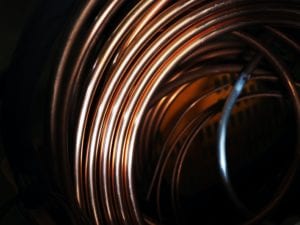With its excellent conductivity and corrosion resistance, copper is one of the most versatile and durable materials. Copper is often used for plumbing and gas applications or anything else designed to last a lifetime. However, handling copper and manipulating it through welding can take some practice. This guide will explain more about how to weld copper.

Pre-Welding Preparation
Welding involves the application of electricity to bond two metals together. Because the heat created by welding can generate harmful fumes, it’s important to weld in a well-ventilated room. It’s also important to wear all appropriate personal protective equipment (PPE). You’ll also want to avoid welding copper that has previously been painted or treated with any chemicals. It’s all but impossible to know what types of toxic chemicals are being released when you weld copper that is “dirty” or previously used.
Weld Copper Process
To weld copper with an arc welder, you’ll initiate the arc at around a 70-degree angle and apply it to pre-warmed copper for a few seconds until a puddle appears. Once you’ve created a puddle, you’ll hold the filler rod (which should also be copper or a copper alloy) up to the arc and direct it to the puddle. This creates a copper-filler mixture that can be used to join two metals together.
After you’ve joined the other metal to your copper, you’ll let it cool. This fuses the pieces together and completes the weld.
It can take some practice to perform these welds quickly and cleanly. However, the longer you allow the copper-filler puddle to sit exposed to oxygen, the less secure the weld will be. In addition, if the copper cools too quickly, the weld may crack—this is why it’s important to pre-heat your copper before applying the arc. Unfortunately, this material’s impressive conductivity can make it more difficult to weld copper. The warmth tends to spread through the entire length of copper, not just the area you’re welding.
At Marvel’s Portable Welding, we have the equipment and supplies you’ll need to get started on your copper welding project. From portable welding setups to custom fabrication and boat repair services, we handle it all and can help you along the way.
